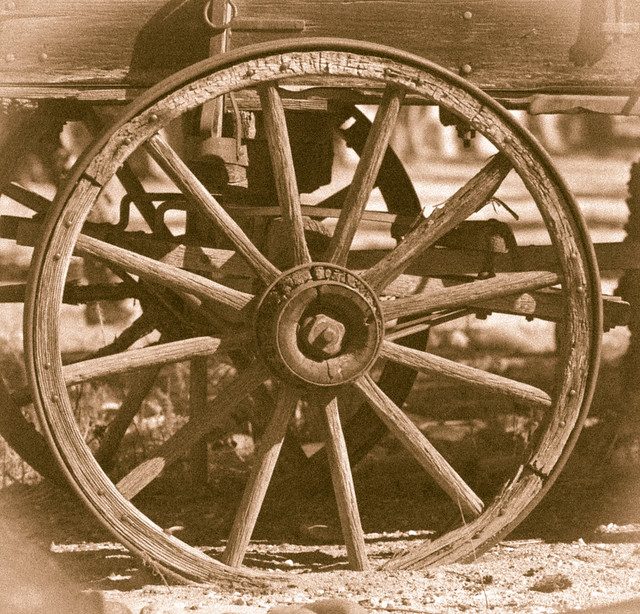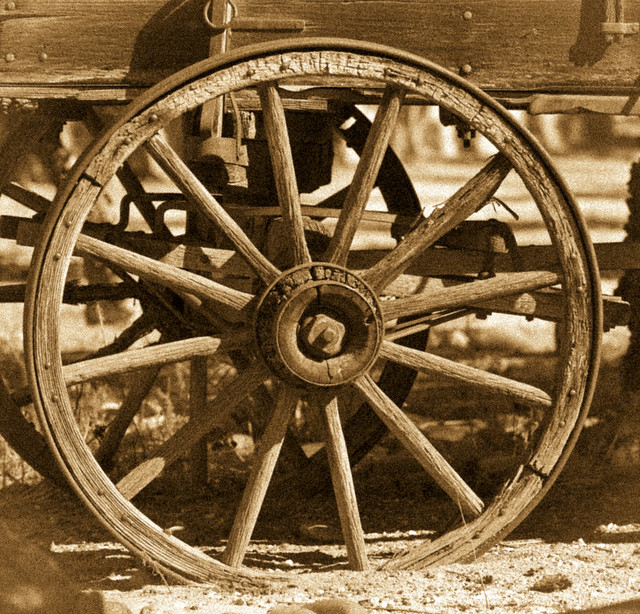Going thru some photos from January, I found these shots of an old wagon. I haven't played with dual-tones before, so I decided to add some atmosphere to the subject with sepia tones, graininess, and some vignetting. Comments, please.
Canon 7D 78mm@f/4 1/500sec ISO100
Canon 7D 95mm@f/4 1/400sec ISO100
 Helpful Posts: 0
Helpful Posts: 0
Results 1 to 8 of 8
Thread: Imitating old sepia tone photos
-
4th February 2011, 10:15 PM #1
Imitating old sepia tone photos
-
4th February 2011, 10:28 PM #2
Re: Imitating old sepia tone photos
Nice work, Al. Have you tried using dark vignetting for comparison? I'd probably back off a little bit on the grain. Just a little bit and that would be great, for my personal taste, that is. Nice work!

-
4th February 2011, 11:14 PM #3
Re: Imitating old sepia tone photos
I like these, but I was thinking the same in regards to the grain even before I read Willie's comment...a lil too grainy/noisy for my personal preference (bit if it works for you thats all that matters), but I really like the composition of both.
Debbie
-
4th February 2011, 11:32 PM #4
Re: Imitating old sepia tone photos
I think Willie is correct about the vignette - as they stand, they look too good, some vignette and possibly lower the black point to give a faded look would make them appear more authentic, maybe even a touch of blur.
-
5th February 2011, 12:22 AM #5
Re: Imitating old sepia tone photos
Thanks for the comments, everyone. I see a lot of these old photos around town, and the quality and condition of the surviving prints varies drastically, so authenticity really boils down to personal preference... and to some extent, whatever preconceived notions and experience one has of old photos, I suppose. We've all seen different old photos to form the notions of authenticity.
For what it's worth, the light vignetting (as opposed to dark) seems to be nearly universal in the old prints I've seen in Tucson, so I'm sticking to that, though I did increase the effect a bit in these versions. I really like Dave's suggestion about the black point... the fading really adds to the look, and I didn't think of that at all. Thanks, Dave! I also reduced the grain somewhat.
As for the blurring... the thing that strikes me about old photos is that the DoF is usually very small (for indoor shots) or almost completely flat (for outdoors). Given the technology of the time and the expense of each shot, I suppose photographers took few chances and set the aperture at one extreme or another according to lighting conditions.
BTW, does anyone have a preference between the two photos (the wagon or the wheel)?


Last edited by Snarkbyte; 5th February 2011 at 12:30 AM.
-
5th February 2011, 12:52 AM #6
Re: Imitating old sepia tone photos
Many old photographs did not exhibit an extraordinary amount of grain because they were shot on very large negatives. One way to simulate the appearance of an old photo is to increase the blue channel and decrease the other channels in post processing. Most old photos were done on emulsion which was sensitive only to blue. Later on, orthochromatic emulsions were sensitive to both blue and green. This is the reason that photographers could process their film under a red safelight. This is still (incorrectly) shown in movies when they show a photographer developing film under the glow of a red safelight.
Panchromatic film, sensitive to most color light was not in general use until after the 1930's.
BTW: I am talking about black and white films which result in a black and white print...
BTW#2: There is never a time that I appreciate digital photography more than when I am able to "instantly" turn an image into a sepia tone without the pervasive rotten egg smell of the standard sulfite sepia toner...
BTW#3: Lots of photographers use sepia tone to impart age to photos. Remember however, that sepia tone did not arrive on the scene until circa 1880 so sepia toning "replica" images of the American Civil War or Crimean War era is probably not historically accurate.Last edited by rpcrowe; 5th February 2011 at 01:13 AM.
-
5th February 2011, 02:44 AM #7
Re: Imitating old sepia tone photos
Thanks, Richard, very interesting stuff. I'm a bit of a history buff, but I know nothing of the history of photography. I'll try the suggestion regarding the blue channel. I'm thinking I may develop a "sepia" preset that I can save in PS that I can apply to images with a single click. All suggestions are greatly appreciated, and the historical background is very helpful. I'll have to look into a historical timeline for photography. It would be cool to develop PS presets appropriate for different periods, and apply them to buildings and objects from each period. It takes a long time for anything to rot in the desert, so lots of history has been preserved here. An idea for an interesting project that could last for many years....
-
5th February 2011, 07:41 AM #8

- Join Date
- Nov 2009
- Location
- Provence, France
- Posts
- 993
- Real Name
- Remco
Re: Imitating old sepia tone photos




 Reply With Quote
Reply With Quote
